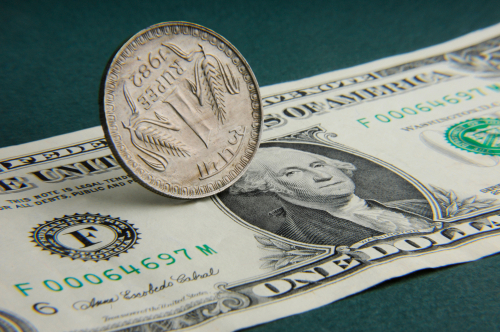Just like any other currency in the world, the Indian rupee is subject to the fluctuations of the global market. Take a look at the major factors that come into play when determining the course of our economy.
🌟 The Importance Of The Dollar
The US dollar is a global currency. Many people regard it as a safe investment. Furthermore, countries hold the dollar in their central reserves as part of their monetary policy.
According to International Monetary Fund (IMF) data, the US dollar accounted for approximately 60% of foreign exchange reserves in most countries’ central banks at the end of the fourth quarter of 2019. Moreover, approximately 90% of global forex trading and 40% of global debt are denominated in US dollars.
The US Dollar Index compares the value of the dollar to six of the world’s major currencies: the British Pound, the Japanese Yen, the Swedish Krona, the Canadian Dollar, the US Dollar and the Swiss Franc.
If the index is high, the dollar is doing well, while a low index indicates that the dollar is weak. Though the Indian Rupee is not included in the index, changes in the dollar’s index relative to other currencies have an impact on the Indian economy.
Any rise or fall in the price of the dollar has far-reaching impacts on the economies of other countries, including India. If we talk about the Indian economy, the dollar price movements deeply impact different segments of the economy, collectively impacting the economy as a whole.
🌟 Indian Stock Market Vs. The Changing Exchange Rate
When observing specific periods of rupee volatility, such as the 2013 Rupee Crisis or the 2018 Rupee Crash, the Nifty weakened in tandem with the rupee.
The value of the rupee is a key determinant of FPI flows, and these flows tend to turn negative when the rupee weakens or is expected to weaken, which has a negative impact on stock market indices.
If INR appreciates, foreign investors get the opportunity to reap higher returns on their investments in India. This leads to an inflow of Foreign Institutional Investment (FII) and/or Foreign Portfolio Investment (FPI).
Due to the inflow of FIIs and/or FPIs, there is buying pressure in the stock market, and the Indian stock market booms and becomes bullish.
🌟 The Economic Growth From FPIs and FIIs
With the dollar index falling, foreign investors see India as a lucrative investment opportunity to earn higher returns on their investments.
Subsequently, FPIs and FIIs flow into the Indian economy, contributing to economic growth. As the number of FPIs and FIIs increases, so does the flow of capital to companies from their international joint venture partners.
This enables businesses to grow and expand. Exports rise as well, resulting in a positive balance of payments position for the country.

Manvendra Pratap Singh is the Founder and CEO of Trinkerr. He is an IIT Kanpur-IIM Lucknow alumnus and an investor with 15+ years of experience.
